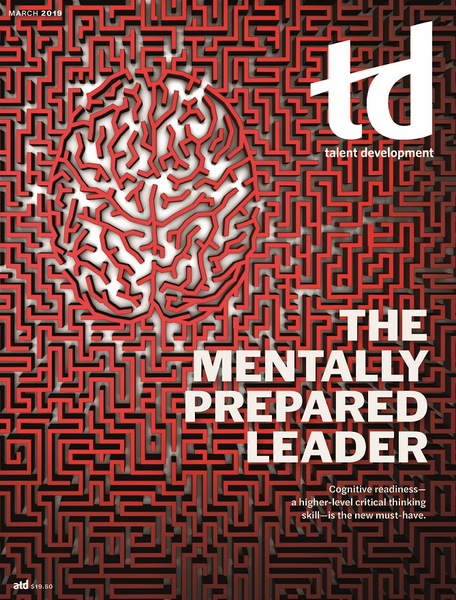TD Magazine Article
Hey, Coach!
High-performing companies use coaching at a much higher rate than their competition.
Fri Mar 01 2019

Coaching—in business, sports, and day-to-day life—is widely viewed as beneficial, especially when faced with change. But it isn't always present. According to Building a Coaching Culture for Change Management, a report from the Human Capital Institute and International Coach Federation, 77 percent of HR practitioners and leaders said that their organizations are in a state of constant change with continuously shifting priorities and strategies. Further, 85 percent of organizations experienced an unsuccessful change management initiative during the past two years. The report links these statistics to the use of coaching.
There is a consensus that employees (78 percent of respective respondents) and executives (75 percent) value coaching. However, only 24 percent report that coaching is a fixture in their organizations with a dedicated line item in the budget. Even fewer—22 percent—believe that all employees in the organization have an equal opportunity to receive coaching from a professional coach practitioner.
Sixty-one percent of high-performing organizations report having a strong coaching culture, whereas 73 percent of other companies stated that they do not, and it's easy to see the effects that this disparity has on business metrics.
In terms of talent and organizational outcomes, companies with strong coaching cultures outscore their competition by 21 percent in investments in employee development and by 30 percent in employee engagement survey scores.
Remember how few organizations had a specific line item for coaching in their budget? Not tracking your investment in this area is an easy way to let it slip under the rug. The report reveals that 44 percent of high-performing companies have a designated line item for coaching, while only 17 percent of the rest do.
A simple way for people to learn how to be most effective at something is through hands-on coaching or mentoring—seeing another person, up close, doing it the right way and guiding them through the process of how to do so. Furthermore, the high-performing organizations use coaching at a significantly higher rate than the rest of the field. Do you really want to risk falling behind?

